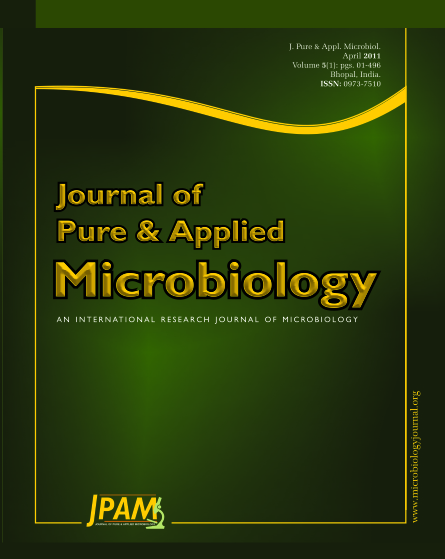This study investigated the influence of sodium chloride concentrations
(0.1-0.5%) and temperatures (ambient (26-28°C); refrigerator(4-11°C) on antimicrobial activity of bacteriocin from Bacillus spp. Three bacteriocins from Bacillus spp were tested against Staphylococcus aureus², Salmonella enteritidis³ and Micrococcus luteus¹. Zones of inhibition observed at various salt concentrations were not significantly different at p<0.05 level, however bacteriocin produced by strain (In5a) showed inhibition (12.00±0.000) mm against Micrococcus luteus at 0.5% salt concentration. The other
2 bacteriocins had inhibition of less than 6.0mm. Bacteriocin produced by strain (Oe2a) was used alone and in combination with sodium chloride at 6.5 and 13% concentrations for cheese storage at ambient and refrigerator temperatures, Cheese kept at ambient temperature were mouldy by the fifth day of storage, while those kept at refrigerator temperature lasted two weeks. It was observed that the bacteriocin was not effective at ambient temperature, in addition, sodium chloride dramatically decreased bacteriocin sensitivity by an increase in microbial counts for samples kept at ambient temperature. Cheese kept at refrigerator temperature, had a decrease in microbial counts that was significant (P<0.05) at higher concentration (13%) than at lower concentration (6.5%) for aerobic counts. The reverse was the case for Enterobacteriacea, coliform, yeasts and moulds counts.
Bacillus spp, Bacteriocins, Sodium chloride, Temperature, Cheese
© The Author(s) 2011. Open Access. This article is distributed under the terms of the Creative Commons Attribution 4.0 International License which permits unrestricted use, sharing, distribution, and reproduction in any medium, provided you give appropriate credit to the original author(s) and the source, provide a link to the Creative Commons license, and indicate if changes were made.


